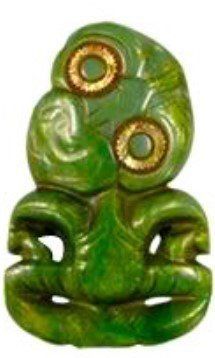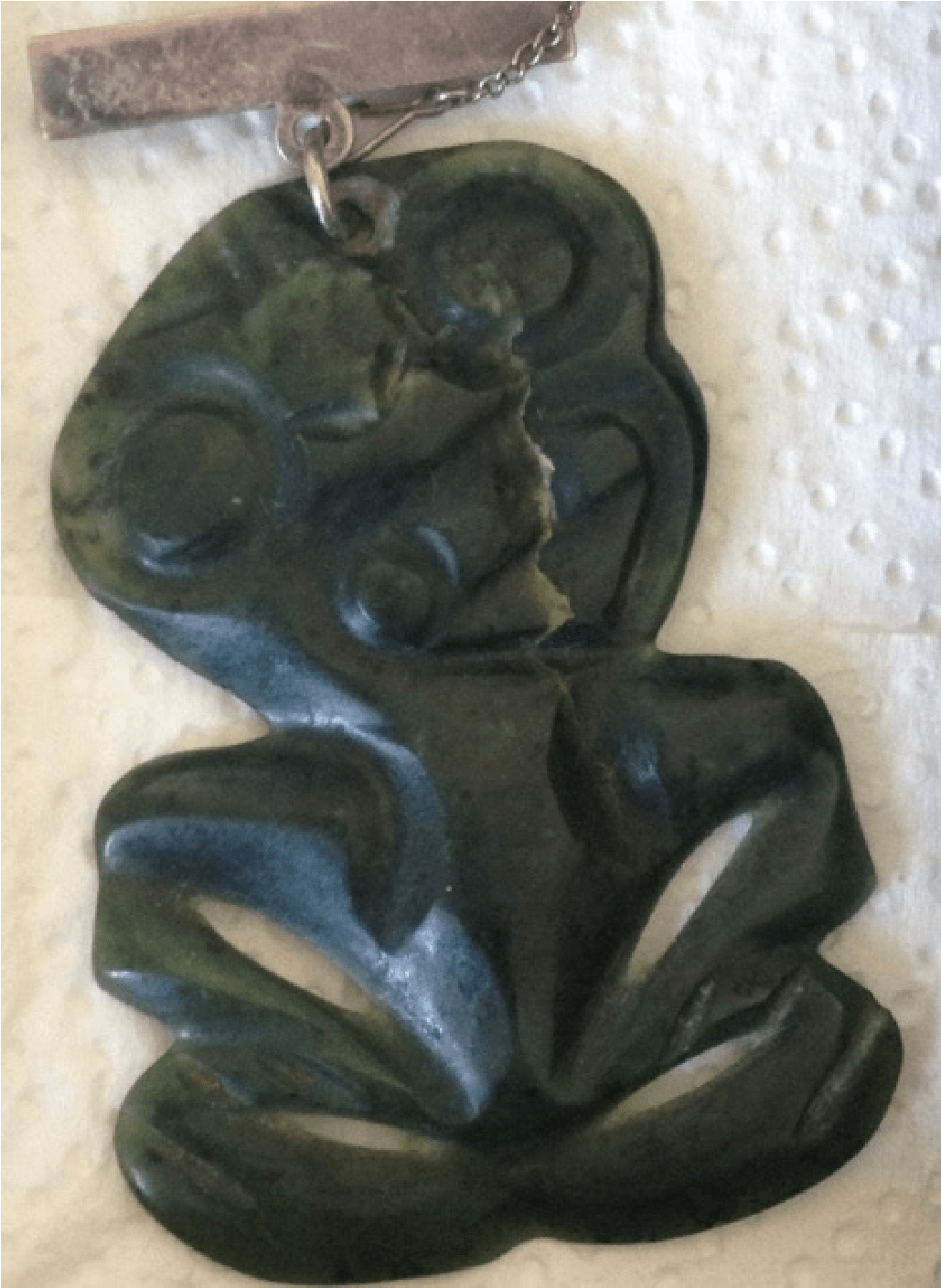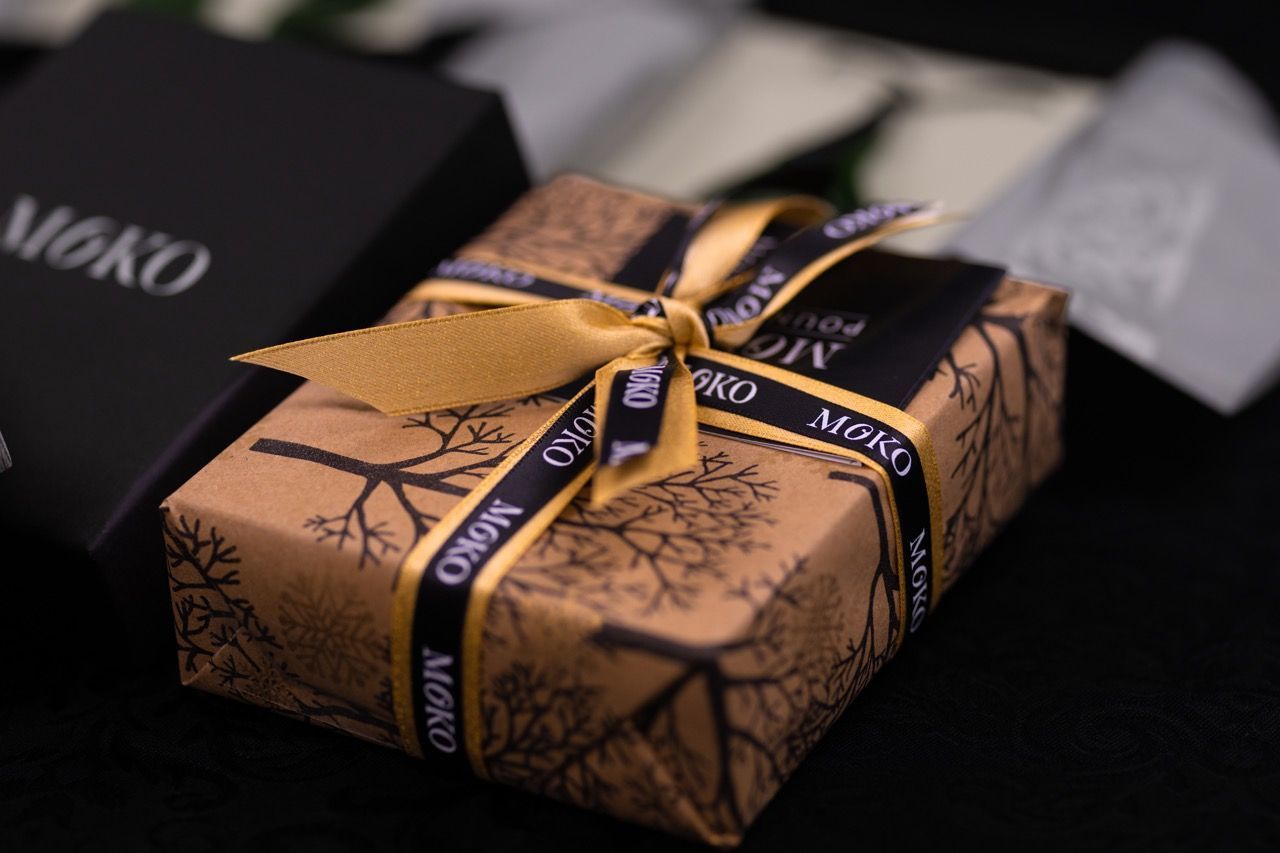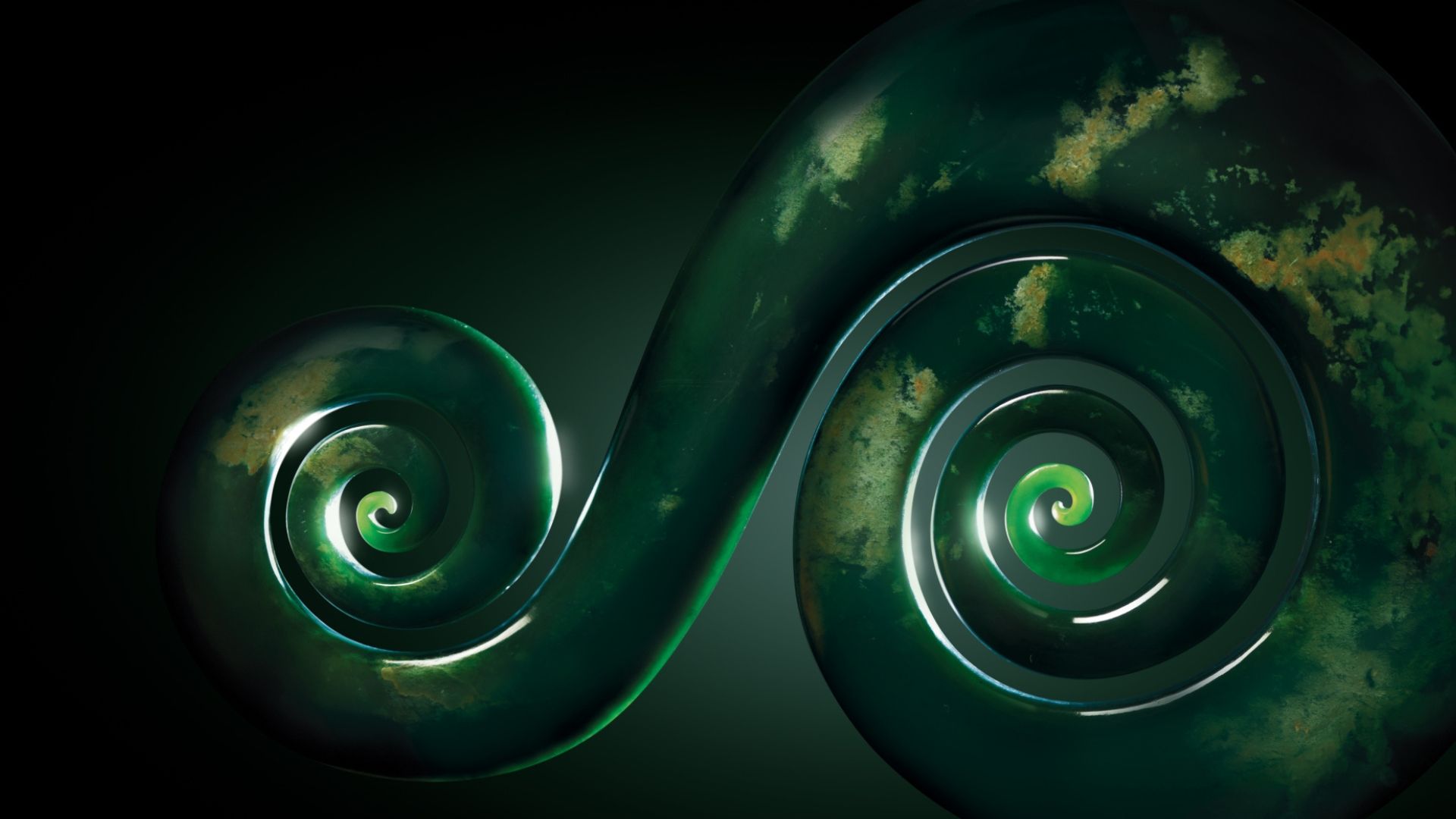
Wāhanga Tuaono - Chapter Six
Looking for Tiki

‘… a piece of green talk [sic] about two & half inches long, and an inch & half broad, flat, and carved into the figure of a most uncooth animal of fancy'.
William Brougham Monkhouse (Munkhouse), ships surgeon on HMB (His Majesty’s Bark) Endeavour (1769-1770), describing a hei tiki worn by a Māori encountered in New Zealand. It was Monkhouse who shot Te Rakau at Turanganui
(Gisborne) where Cook first made landfall in Aotearoa. Monkhouse would never see
England again. He died in Jakarta of dysentery on the journey home.
‘As they have no metal, their adzes and axes are made of a black stone, or of a green talc which is not only hard but tough ... Their axes they value above all that they possess, and never would part with one of them for anything that we could give. I once offered one of the best axes I had in the ship, besides a number
of other things, for one of them, but the owner would not sell it; from which I conclude that good ones are scarce among them.’
Captain James Cook. HMB Endeavour. 1769-70 in New Zealand.
The hei tiki above was given to Captain James Cook by Māori at Queen Charlotte Sound in 1769 during his first voyage to the Pacific and New Zealand. It is now part of the Royal Collection and was probably given by Cook to George III (1738 - 1820) in 1771 upon his return to England. The King had personally sponsored Cook’s expedition. Cook’s journal entry concerning adzes of ‘green talc’ is not out of place in a discussion regarding tiki. It is evident that tiki were often fashioned from old pounamu toki blades, further adding to the mana of a piece that will have spent previous lifetimes in the hands of illustrious ancestors. A blade might be sharpened, shaped and further smoothed often in its working life but there will come a day when a new adze is required. Viewing a toki, one can easily imagine the blank of a hei tiki fitting nicely within its form. The proportions of a tiki quite neatly match the dimensions of the working face of a greenstone adze.

So to the eternal question; what does tiki represent? In the first instance, less an ‘uncooth animal of fancy’ than an artfully worked stylised human figure of indeterminate sex, in my opinion. Let’s be clear, Māori are not shy in defining male and female form. Most tiki display no such obvious distinction. You
could argue the stance is that of a warrior during a haka, eyes wide in the pūkana, the tongue protruding in the defiant gesture that is whāterotero. But for me, there is a cheekiness in the figure as well, the exaggerated tilt of the head; part challenge, part curiosity, childlike almost, but more obviously I think, shaped in such a way as to accommodate the narrowing of an adze towards the haft end of the blade.
The word ‘Tiki’ or variants of it, appear throughout Polynesia (Ti’i in Tahiti, Ki’i in Hawaii). Generally it references the human figure in a carved and stylised form rendered in wood or stone or occasionally bone. Some tiki are immense and imposing, such as the Mo’ai of Rapanui or Easter Island. others more delicate. All seem to emanate from traditions invoking the first flesh and blood human, Tiki, in most, but not all cases, a man. In Mangaia, the second largest Island in the Cook Island group, Tiki is a woman.
Hine te iwaiwa is said to personify the exemplar of motherhood. Tradition hangs a tiki from her neck as a gift from her father Tāne. Hine te iwaiwa also personifies the uha, the female essence. The suggestion that hei tiki represent ideas of fertility in womanhood doubtless stems from these associations but it belies a more universal notion of hei tiki as a talisman of memorial and a symbol of ancestry. The generic form is given particular and personal importance by its relationship to whakapapa. To wear the tiki that was handled by tūpuna is to carry their mana forward. In the shape of a tiki, our ancestors lead us and we are given comfort.
This little hei tiki belongs to a friend of mine. The kōrero that accompanies it is both profound and intriguing. The stone itself is deeply flawed with a scar-like fissure cutting through the face of the piece, suggesting the stone was perhaps an off cut either cheaply or freely acquired by the maker. While the crafting of the tiki is what I would describe as workmanlike, it shows great care in the fact that it is quite a fragile piece and would have broken easily with rough or careless handling. The piece is approximately 60mm high by 30mm wide and quite thin in profile, perhaps 4mm thick tapering to a blunt edge of 1mm. It is doubtful that this piece had a previous life as a functioning toki. It
is more likely in fact to have been crafted from an otherwise unwanted piece of pounamu, discarded for the obvious flaw. A souvenir piece then, carved as a gift, or perhaps for sale sometime in the latter part of the nineteenth century. The medal-like suspension seems to be an early twentieth century adaptation. By the coarse nature of its execution, the hole through which the tiki hooks to the bar might have been bored using flint as a bit. So much of this piece speaks of the maker having to utilise whatever came to hand. The piece was made in Otago. The story that attends it is that it may have been crafted by one of the Māori political prisoners held in Dunedin between 1869 and 1882. These were predominantly men from South Taranaki, including some of those known as the Parihaka Ploughmen, followers of Te Whiti and Tohu Kākahi, they who removed the survey pegs and ploughed the land for sowing. As to actual provenance, the story is all we have. We do know that greenstone off cuts and discards were made available to these prisoners. We don’t know much more than that. Except that the stories persist. I think the piece has great character and shows in the maker a good deal of patience and thoughtfulness, whoever he was and whatever his experience. It is a stoic piece of stone. The story is enough to give it mana.

Air New Zealand used to dish these little plastic hei tiki out to international passengers as a kind of ‘Kia ora’. I had a bunch of them when I was a kid courtesy of my father’s trips back to Australia to see his family. Such promotional devices are frowned upon these days, like the little plastic pātaka the bank gave me as a money box to encourage saving, the whole idea fell apart when I tried to get the money out early. Cultural appropriation occupies a delicate space in our landscape. When does tribute and homage become a commercial ripoff? When does an indigenous motif become public property and a milestone in the mainstream culture, a moment of understanding that moves us forward? When does plastic replace pounamu? And, as an afterthought, I wonder if King George III ever wore his tiki.
Ben Brown
Ben Brown
Other Blogs




